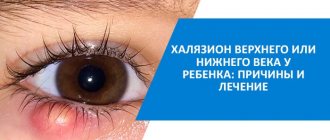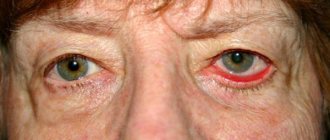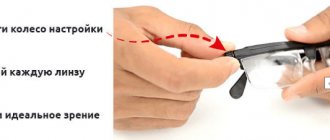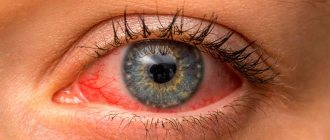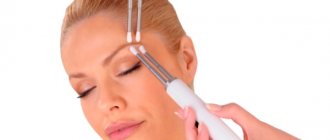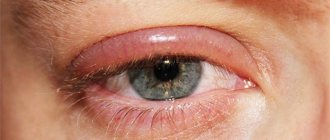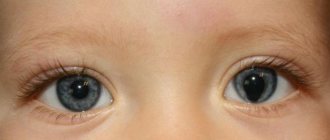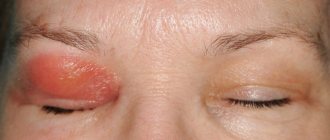Causes of lower eyelid hernia
The area around the eyes is thin and delicate, becoming less firm and elastic with age. When fat cells get under it, bags appear under the lower eyelids, they are painless.
Most often they occur due to age-related changes. The muscles that support the eyelids become weaker, and the skin sags. Fluid accumulates in the space under the eyes. Even regular care cannot prevent the formation of hernias.
The use of decorative cosmetics, stress and high visual load affect the occurrence of cosmetic defects.
Several factors that lead to the formation of hernias:
- fatigue;
- lack of sleep;
- heredity;
- hormonal changes;
- poor nutrition;
- Sun rays.
The formation of bags is affected by drinking alcohol and smoking. Additional stretching occurs due to impaired microcirculation and lymphostasis in the periorbital area.
Pathologies of the kidneys, cardiovascular and optical systems, paresis or paralysis of the eyelids may also be the cause.
Advantages of laser blepharoplasty:
- A combination of patented laser techniques in one procedure.
- Local anesthesia.
- Minimum rehabilitation period (1-3 days)
- No seasonal restrictions
- Unsurpassed effect of anti-aging therapy in the middle third of the face.
- Safety (protective eye shields are used).
The results of laser blepharoplasty are comparable to the effect of plastic surgery. But the procedure has no side effects and does not require long-term rehabilitation.
2. Injection blepharoplasty. It involves injection into the area above or below the eyelid of a special agent that resolves fat deposits, removes excess fluid and activates the regenerative properties of the skin. Injection blepharoplasty is performed on both the lower and upper eyelids. The injected drugs help eliminate wrinkles, launch natural regeneration processes, and eliminate excess subcutaneous fat.
The result is to “open” the eyes, smooth out the skin texture, and achieve an aesthetic appearance. As a result, throughout the entire duration of the drug’s action, wrinkles are smoothed out, swelling, dark circles and bags under the eyes go away, and hernias are smoothed out.
To perform contour injection blepharoplasty, fillers based on hyaluronic acid are used, which, evenly distributed, smoothes the skin surface and triggers rejuvenation processes by stimulating the production of collagen and elastin.
The tissues are saturated with moisture and the production of elastin and collagen is stimulated. In addition to hyaluronic acid, bioremediation mesococktails are used to achieve similar goals. Among the substances in this group are:
- Yuvederm;
- style;
- Glytone;
- Teosyal;
- Dermaheal eyebag solutions;
- Meso Wharton P199;
- Meso Xanthin F199.
Another group of drugs is aimed at combating excess tissue that contributes to excessive drooping of the eyelids, the formation of bags, edema, and hernias. Problems are solved using lipolysis. They use drugs based on natural ingredients that trigger the process of breaking down adipose tissue and normalizing metabolic processes. Popular substances in this group are:
- Lipostabil;
- MRKh complex;
- Caregen;
- Aminomix.
Important! The choice of the drug is made by a cosmetologist. A professional assessment of external signs helps to correctly determine the means of control.
3. Microcurrents. Microcurrent therapy is a soft and delicate hardware technique for facial rejuvenation. During this procedure, a pulsed current of low voltage and with different frequency characteristics affects the skin, muscle tissue, lymphatic and blood vessels. Microcurrents help increase energy reserves in cells, change the resting potential on membranes, normalize metabolic processes, and have a lymphatic drainage, anti-inflammatory and regenerating effect.
- Effects of microcurrent therapy.
- improvement of skin microcirculation, which ensures sufficient delivery of nutrients and oxygen to cells and timely removal of toxins;
- increasing the firmness and elasticity of the skin, tightening the skin due to the activation of fibroblasts;
- elimination of bags under the eyes and dark circles under the eyes;
- normalization of trophism and skin moisture;
- optimization of the sebaceous glands, narrowing of pores, getting rid of acne on the face;
- stimulation of local and humoral immunity to prevent and eliminate inflammatory processes on the skin;
- normalization of melanocytes (cells that produce pigment) and acceleration of melanin breakdown, which helps improve complexion and reduce signs of skin photoaging;
- normalization of muscle tone;
- elimination of facial swelling;
4. RF lifting (radio wave lifting) is a safe and painless rejuvenation technique based on the effect of radio wave pulses on the skin. The lifting effect is achieved by uniformly heating the deep layers of the skin to a certain temperature.
This leads to remodeling and activation of collagen and elastin synthesis, which helps tighten and tighten the skin, restoring firmness and elasticity of the skin. The procedure prevents an increase in the amount of fat under the eyelids, normalizes microcirculation and lymph flow.
Symptoms
It is difficult to notice the formation of a problem at the first stage of development. Visual functions do not deteriorate, there is no aesthetic defect. The bags gradually become more noticeable, the proportions of the face are disrupted and the expression of the eye changes.
The hernia causes severe lacrimation and causes deterioration in visual perception. The periorbital area is severely swollen. It is important to distinguish fatty hernias from edema.
If you press lightly on the eyeballs, the formation under the eyes will increase. This symptom is characteristic only of a hernia.
The swollen area may be pink or slightly reddish. In the morning, swelling increases because when lying down, additional fluid accumulates under the lower eyelid.
With a hernia of the lower eyelid, the zygomatic sac and tear trough become more noticeable.
Prevention
A healthy lifestyle, in which a person monitors nutrition, follows a drinking regime, and gives up bad habits, can prevent the development of fatty hernias of the eyelids . Regular care of the skin around the eyes after 25 years also helps. In this case, you can make masks at home, visit a cosmetologist, perform massage on the problem area, and special exercises to strengthen the orbicularis oculi muscle.
Fatty hernias of the eyelids are pathologies caused by natural processes in the body. Their correction is recommended to be carried out under the supervision of an experienced specialist. This will allow you to achieve visible results and minimize the occurrence of unpleasant consequences.
Sovinskaya Elena, medical observer
19, total, today
( 165 votes, average: 4.72 out of 5)
How to remove jowls?
Lamination of hair
Related Posts
Diagnostics
You can determine the onset of pathological changes yourself. The diagnosis is based on a physiological examination and palpation of the periorbital area. When you press on the skin in the problem area, you feel a thickening.
The hernia is clearly visible. Appears on one or both sides. An ultrasound examination of the eyeball is performed for a dynamic assessment of the treatment being carried out, to exclude neoplasms of the eyeball and orbit that can cause this manifestation.
In case of an ocular hernia, the soft tissues of the eyelids are examined non-contactly using a slit lamp. If there are concomitant conditions, additional examination is carried out. For kidney problems, the patient is referred to a nephrologist, and for heart disease, to a cardiologist.
Why do they arise?
A hernia of the upper eyelid in the eye area is formed due to the accumulation of subcutaneous fat. This can be caused by both age-related changes and ophthalmological pathologies. Also, the development of such a defect can be provoked by:
- problems with blood circulation on the face;
- prolonged exposure to ultraviolet rays on areas in the eyelid area;
- working at a computer monitor;
- constant stress, lack of sleep, psycho-emotional stress.
There are often cases where hernias occur due to a genetic predisposition.
Treatment
Conservative treatment options
Lifting with 3D mesothreads
Linear mesothreads are inserted along the Langer line, with a distance of 0.5–1 cm. Anesthesia is provided at the request of the patients. Thread meso-reinforcement can not only rejuvenate, but also solve the problem of eyelid hernia.
If the bags under the eyes are old, the diagnosis revealed they are large in size or the structure is dense, then lifting in this way is a contraindication.
The threads remain in the eyes for 6–9 months; they dissolve on their own. The material injected under the skin then breaks down into water and carbon dioxide.
Contraindications for thread lifting:
- infection;
- blood disease;
- diseases of the nervous system;
- tumors.
Ultrasonic exposure
Ultrasound manipulation has successfully proven itself in the fight against lower eyelid hernia. The action consists of exposure to an ultrasonic wave.
Ultrasound precisely heats the areas of the frame, which ensures the clarity of the oval of the face. The laser removes the hernia, affecting a depth of up to 4.5 mm, without damaging the skin. Manipulation is prohibited during pregnancy, lactation, oncology, the presence of pacemakers, infectious and inflammatory diseases.
During the procedure, the patient feels a slight tingling and warmth. Ultrasound exposure does not require special preparation or care during the recovery period.
The effectiveness of the procedure is not immediately noticeable. The result will appear after 2-3 months, when the synthesized collagen replaces the old one.
Surgery
A number of diagnostic tests are performed before surgery. Any intervention has a negative effect on the body; the doctor must confirm the absence of other diseases for which surgery is contraindicated.
A cardiogram and fluorography of the lungs are performed. Required laboratory tests:
- general blood analysis;
- Analysis of urine;
- analysis for HIV and AIDS.
This allows you to exclude diabetes mellitus and check blood clotting.
There are several types of surgical intervention:
- traditional way;
- transconjunctival blepharoplasty;
- transconjunctival laser surgery.
Traditionally, the hernia is removed using a scalpel. This is the most accessible and most traumatic method of treatment. The operation is performed under anesthesia. An incision is made along the eyelash line, the surgeon removes excess fatty tissue and applies a cosmetic suture.
The rehabilitation period takes 6–10 days. Complete healing occurs within 3 months.
The goal of transconjunctival blepharoplasty is to restore facial aesthetics while maintaining proper function of the lower eyelid. Correction is carried out without skin incisions. The surgeon gains access to the hernia through the conjunctiva. The doctor pumps out fat deposits.
Advantages of transconjunctival blepharoplasty:
- low-injury;
- no complications;
- no seams;
- short recovery period.
The surgical procedure is carried out after instillation of anesthetic drops; the patient does not feel the puncture of the conjunctiva. There may only be a discomfort when suctioning fat tissue.
The operation is not performed for infectious and inflammatory diseases in the acute stage, chronic illnesses and during exacerbations and the menstrual cycle, for xerosis, AIDS, HIV.
Transconjunctival laser surgery is a manipulation performed using laser equipment to correct deformities and improve the aesthetic appearance. The technique is contraindicated in cases of hyperfunction of the thyroid gland, oncology, impaired blood clotting, and diabetes mellitus.
Laser eye bag removal is not as traumatic as traditional blepharoplasty. It is successfully used to remove lower eyelid hernias because the mucous membrane recovers well and quickly.
Traditional medicine recipes
Bags under the eyes can be easily eliminated with home remedies. Surgery can be avoided, but before using traditional recipes, consult a doctor.
Home remedies:
- Choose a ripe avocado in the store. Cut the fruit into half rings and apply to the bags under the eyes.
- Chop 15 grams of parsley and pour 100 ml of water into a container. Place the container with a saucepan of water and hold it in a water bath for 5 minutes. Use the strained liquid for lotions. Moisten tampons in the composition and apply for 20 minutes. 100 ml is enough for 1 day. It is recommended to prepare a new solution every day, but you can store the remaining medicine in the refrigerator.
- 1 tbsp. l. Finely chop the sage, add 200 ml of boiling water. Infuse the medicine for 2 hours. Strain, divide into 2 parts. Use the first for morning washing, the second for lotions throughout the day. Also wash your face before going to bed.
- Cut the boiled potatoes in half. Place vegetable slices under your eyelids. Remove after half an hour. After removing the potatoes, rinse the skin well and treat with face cream.
- A good remedy is rose oil and tea clay. Both ingredients are sold at pharmacies. Mix the products in equal proportions, apply to the problem area for 15 minutes and rinse with warm water.
We recommend reading: massage for bags under the eyes
Warm pumpkin pulp and tea bags are used for lotions. A bag of heated salt is applied to the sore eyelid for 5 minutes.
Folk remedies help relieve inflammation and swelling for a while. It is not recommended to use ice for compresses; it is better to cool the spoon and apply it to the bags with the concave side.
Treatment methods for eyelid hernia
An ophthalmologist must diagnose a hernia of the eyelid. When this disease is detected, we most often recommend surgery to the patient.
Although hernias themselves do not pose a health hazard and can only in exceptional cases contribute to vision impairment, they are an unpleasant cosmetic problem. Surgery to eliminate an eyelid hernia eliminates this pathology and helps correct age-related skin changes.
Surgical treatment of eyelid hernia is carried out in two main ways:
- Percutaneous approach
- when the surgeon makes an incision along the outer skin surface of the eyelid, excising excess skin and fatty tissue. Small wounds after this operation heal quickly and remain invisible - Transconjunctival access
- excess fat is removed through the conjunctiva, the inner surface of the eyelid. With this method, no external traces are left.
Removal of an eyelid hernia is painless for the patient on an outpatient basis. If you follow all the doctor’s recommendations before and after surgery, the success of the treatment is guaranteed, and the problem will be eliminated forever.
At Dr. Belikova's Eye Clinic, you can undergo a comprehensive vision examination and receive detailed recommendations from our specialists.
